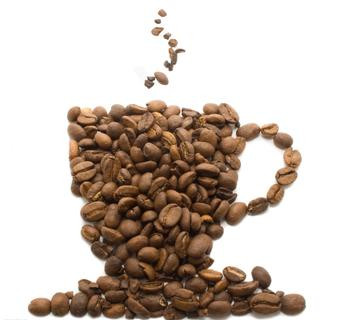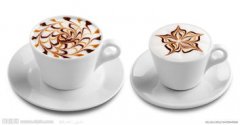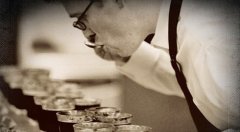The use of French filter press in the process of using the problem
In Chinese families, we usually call it "tea maker". It was invented in France in 1852 and is specially used to make coffee. But why is it called a tea maker after arriving in China? Because in the early days, few people in Chinese families drank coffee, and most of them were tea-based, so we all called it a tea maker. The method of making coffee is the same as that of making tea, the water temperature should not be too hot or cold, the coffee powder should be appropriate, and the brewing time should be accurate. The quality of the coffee made from the tea maker is very ideal, because the coffee it brews will not remove the oiliness of the coffee, so the coffee is very fragrant.

Production method:
Put 45 grams (4 and a half tablespoons) of coarse-grained coffee powder into the coffee pot, pour hot water from 92 to 96 degrees Celsius, soak for 3 minutes, then press the piston of the filter to the bottom of the pot to separate the coffee powder from the brewed coffee, and the coffee is ready!
Avoid problems:
First, the choice of coffee pot: according to the slow development of coffee culture atmosphere at present, the market of coffee brewing equipment is not very sound. When buying, we must pay attention to the uniform thickness of the glass of the coffee pot, the vertical cup and bucket, and the same caliber. The metal shelf outside should be strong and hard.
Second, water temperature: too high water temperature will deteriorate the oil quality of coffee, make coffee bitter, too low water temperature can not boil coffee taste coffee will be sour and astringent. So the normal water temperature is 91-96 degrees Celsius.
Third, coffee powder grinding thickness: this is a soaking method, need to soak for 3 minutes, so coffee powder should be coarse.
Fourth, downward pressure: you need to make this action carefully, press the pressure bar with the palm of your hand, and apply it vertically and uniformly down the bottom of the pot. Remember to push evenly, too hard will burst the coffee pot.
Fifth, coffee powder can not be boiled twice: the standard first cooking, brewing delicious coffee, the second time is bad water.
Any kind of coffee is made by washing the taste of coffee (water-soluble and insoluble organic and inorganic substances) out of the coffee for the second time.
Important Notice :
前街咖啡 FrontStreet Coffee has moved to new addredd:
FrontStreet Coffee Address: 315,Donghua East Road,GuangZhou
Tel:020 38364473
- Prev

Coffee knowledge Fancy coffee practices
1. Mix whipped cream and sugar a day in advance to form a hard foam; 2. Squeeze the flower nozzle into various cream flower shapes on edible wax paper and put them into the refrigerator freezer for molding; 3. The next morning, I brewed two cups of coffee with white water between 80-86 degrees (boiling water will make coffee bitter), and cooled it a little (because I want to put cream flowers, coffee is too hot, put it in, it will melt immediately, affecting the beat).
- Next

The use skills of mocha pot cleaning method of mocha coffee pot
When using it for the first time, unscrew the top spout, remove the coffee filter, and check whether the filter and rubber band under the upper pot have been installed. 1. Wash the hot water and then reinstall it as it is, fill the bottom with water, and be careful not to exceed the height of the safety valve. 2. Fill the filter with coffee (according to the taste, usually 6 grams per cup of coffee, please.
Related
- Beginners will see the "Coffee pull flower" guide!
- What is the difference between ice blog purified milk and ordinary milk coffee?
- Why is the Philippines the largest producer of crops in Liberia?
- For coffee extraction, should the fine powder be retained?
- How does extracted espresso fill pressed powder? How much strength does it take to press the powder?
- How to make jasmine cold extract coffee? Is the jasmine + latte good?
- Will this little toy really make the coffee taste better? How does Lily Drip affect coffee extraction?
- Will the action of slapping the filter cup also affect coffee extraction?
- What's the difference between powder-to-water ratio and powder-to-liquid ratio?
- What is the Ethiopian local species? What does it have to do with Heirloom native species?

